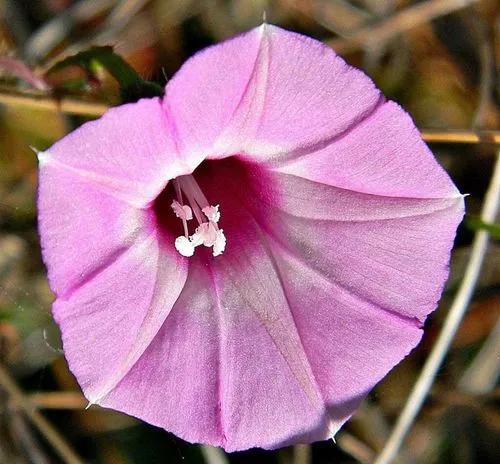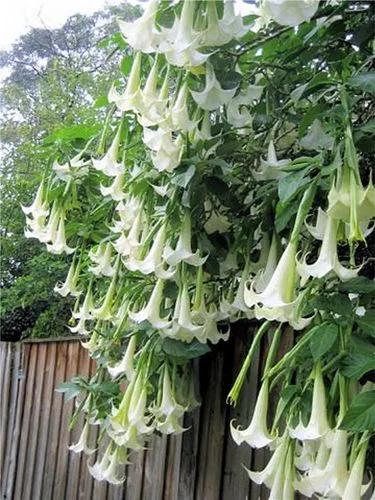Kalanchoe manginii is a perennial, decorative succulent up to about 30-40 cm tall and wide, which forms small bushes of thin, woody arching stems with rounded, glossy leaves. It will produce its delightful salmon-red hanging bell-shaped flowers in spring. Boiteau & Mannoni described variety triploidea Boit. & Mann, for natural, triploid plants with larger flowers.Derivation of specific name: The species name honours the French botanist Louis Alexandre Mangin (1852-1937).Stems: Several slender, erect, arching or creeping, reddish, semi-woody; vegetative stems covered by glandular hairs, flowering stems mostly glabrous.Leaves: Opposite, very fleshy, persistent, almost sessile (without petiole), of a rather variable shape, orbicular, oblong, obovate or spatulate (spoon-shaped), 1-3 cm long, 0,5-1,5 cm broad and up to 8 mm thick, base tappereded, at times covered by a thin down when young, becoming glabrous. Margin entire or rarely 1-3 weak notches at the apex.Inflorescences: Terminal, open panicle-shaped on a short, glabrous or sparsely hairy scape carrying sparse, drooping flowers (usually 1-5). Flowering branches 10-40 cm long. Adventitious buds are produced in the inflorescence and as the blooms fade the flower heads can become crowded with tiny plantlets.
Beach Bells Care
Kalanchoe Manginii
Other names: Chandelier Plant, Bryophyllum Manginii



How to Care for the Plant

Water

It needs moderate watering in autumn and spring while in summer it should be watered thoroughly and allowed to dry before watering again. In winter give only occasional watering (only when the plant starts shrivelling), but it will generally grow even in winter if given water. These plants will survive on neglect, but have the tendency to become abnormally gross and flabby if they are overwatered. Over-watering is the most common cause of plant failure. Avoid using cold water when watering plants because it could shock the plant.

Pruning

Pinch off the faded flowers and continue to pinch the tips of the plants for a few more months to promote a bushy plant. If not pruned the plants become leggy and need to be replaced.

Fertilizer

From the end of spring to the beginning of autumn, feed the plant with a monthly dose of fertiliser. Pruned plants may be given a dose of full strength fertilising as a boost.

Sunlight

Keep this plant out of strong, direct sunlight; although exposure to the morning sun is fine. The kalanchoe is best kept in a shady setting. In the home it should be grown in sunny window. Flower formation is stimulated by very short photoperiods. When growing kalanchoe in containers, they can be boosted to produce more buds and flowers by giving them 8 to 10 hours of sunlight per day.

Soil

Use a soil based potting mixture with the addition of a small amount of coarse sand, pumice or lava grit to ensure good drainage. They grow best in clay pots for aeration and need drainage holes in the bottom. Setting the container on a dish filled with rocks or gravel provides extra drainage.

Temperature

Kalanchoe manginii grow well in normal room temperatures. It is native to Madagascar and will bloom at temperatures of between 15 and 16 degrees Celsius. Avoid temperatures below 5°C because they can kill the plant after a few hours.

Container

Plants that are not to be discarded should be moved each spring into pots one size larger. The maximum pot size needed should be about 12 cm.

Additional

Parts of Kalanchoe manginii are poisonous if ingested. All members of Kalanchoe are toxic for livestock, birds and small animals. Dogs are reported to be particularly sensitive to the cardiotoxic effects of Kalanchoe.

Popularity

19 people already have this plant 7 people have added this plant to their wishlists
Discover more plants with the list below
Popular articles






